Cornith Canal
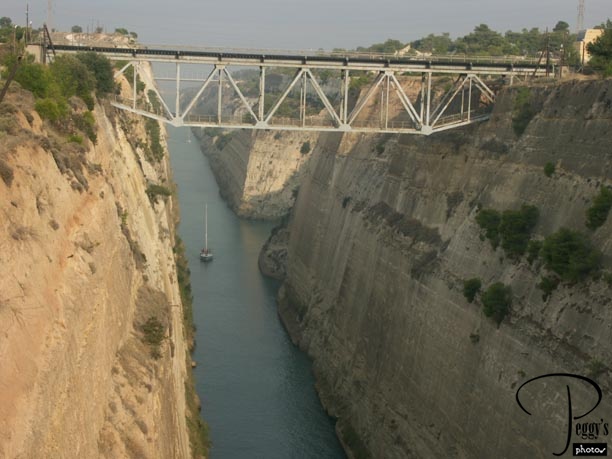
We left Athens early this morning to first visit the Cornith Canal. We had a full tour (49 people), with no extra seats on the bus. We had only Americans and Canadians on our tour, which surprised all of us who have gone on previous Trafalgar tours, which all had at least an Aussie contingent and maybe some Kiwis on them. My seatmate was Eleanor, an extremely interesting world traveler who also is taller than I am, of great importance as she gave me the window seat on the entire tour as she said she could easily see over me. The Cornith Canal is at the isthmus separating the Peloponnese peninsula from the rest of Greece. The canal, 8 miles long, was built in 1882–83 to allow ship passage from the Sardonic Gulf to the Gulf of Cornith. This photo shows, as far as I could tell from where the sun was, a boat coming from the Gulf of Cornith.

Cornith Canal
Cornith Canal
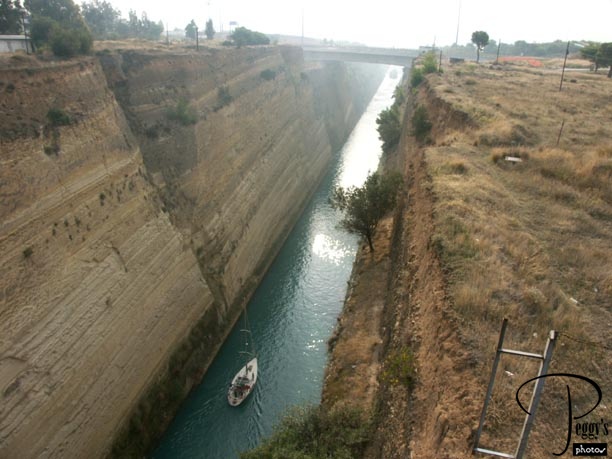
This photo shows the same boat sailing to the Sardonic Gulf. The canal is only 75 feet wide, making it too narrow for very large ships to traverse it. Prior to the canal being built, ships were transported from one gulf to the other by being put on slides, which were then rolled on logs along the diolkos, a stone–paved route between the port of Lechaion on the Gulf of Cornith to the port of Kenchreai on the Sardonic Gulf.

Cornith Canal
Ancient Cornith
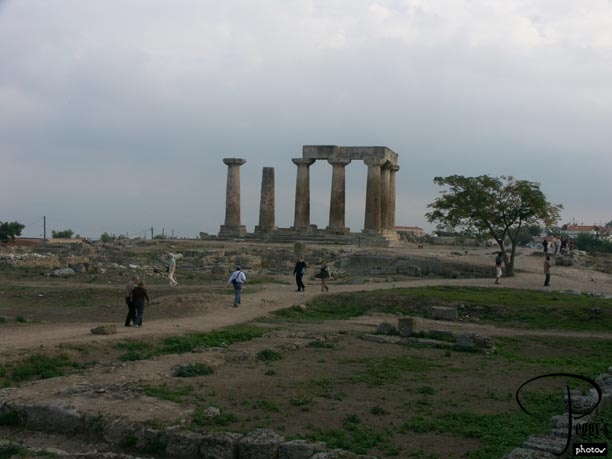
The Temple of Apollo (circa 550 B.C.). Ancient Cornith was founded in Neolitic times (5000–3500 B.C.). In 146 B.C., Cornith rebelled against their Roman rulers and an order was given to destroy the city, but the Temple of Apollo was spared.

Ancient Cornith
Ancient Cornith
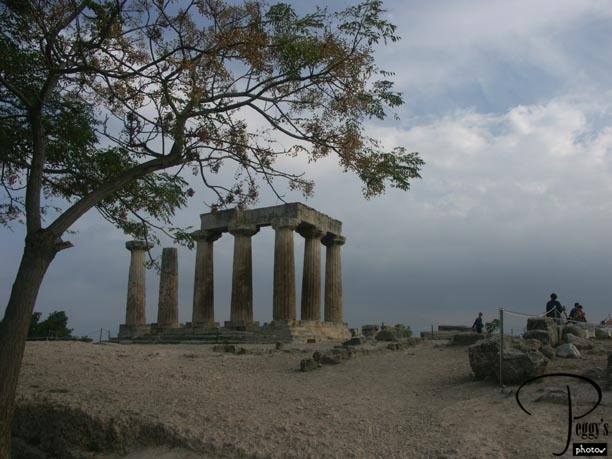
Closer–up view of the Temple of Apollo. Only seven of its original 38 columns remain.

Ancient Cornith
Ancient Cornith
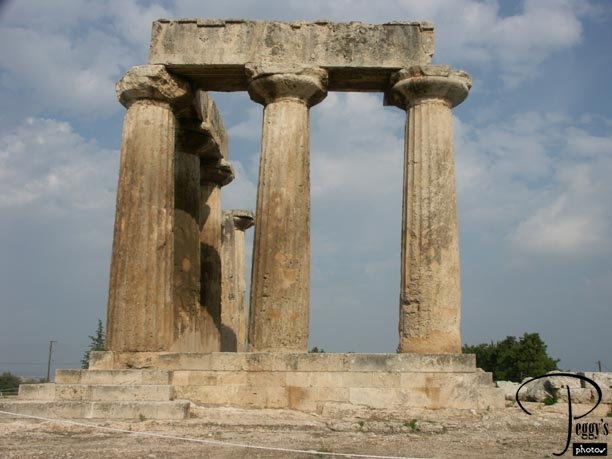
Another view.

Ancient Cornith
Ancient Cornith
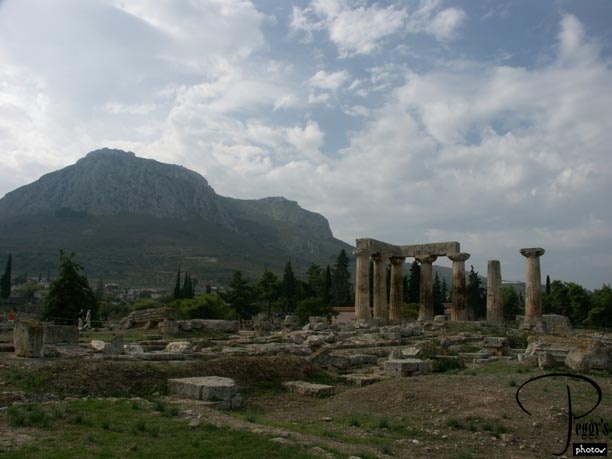
The Temple of Apollo with the peaks of the Acrocornith in the background. On the higher of the two peaks are the ruins of the Temple of Aphrodite. There are also ruins of fortifications dating back to pre–Christian times to the Turkish occupation.

Ancient Cornith
Ancient Cornith

In this photo, you can see the fortifications on top of the Acrocornith. You can climb up to the top of the hill.

Ancient Cornith
Ancient Cornith
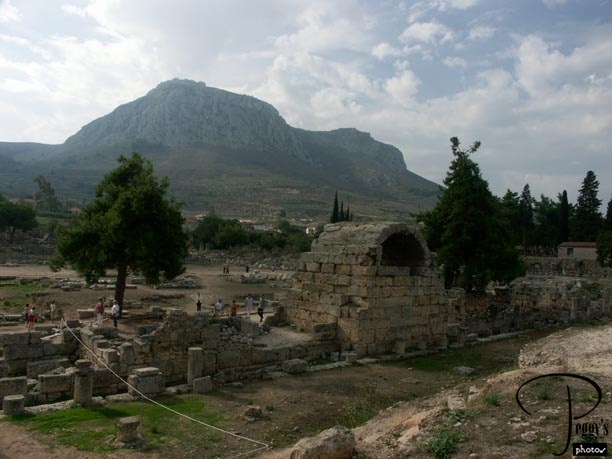
In 46 B.C., Cornith was refounded as a Roman colony by the order of Julius Caesar. Cornith became a major center of commerce because of its location near the isthmus and had a population of 750,000 people. This is a view of the ruins and the ancient Roman agora (forum or marketplace).

Ancient Cornith
Ancient Cornith

Another view of the ancient agora.

Ancient Cornith
Ancient Cornith
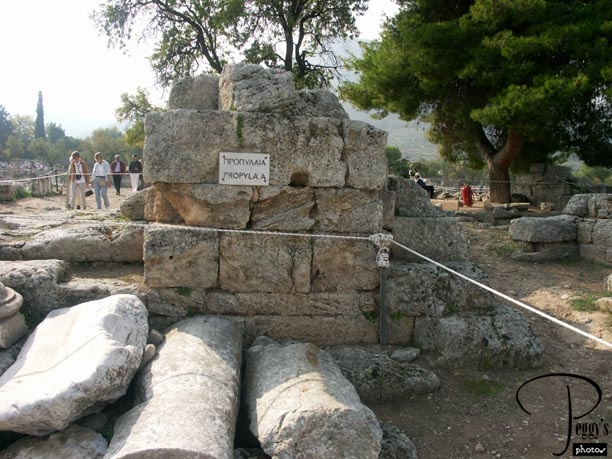
The Propylaion (entrance) to the agora.

Ancient Cornith
Ancient Cornith
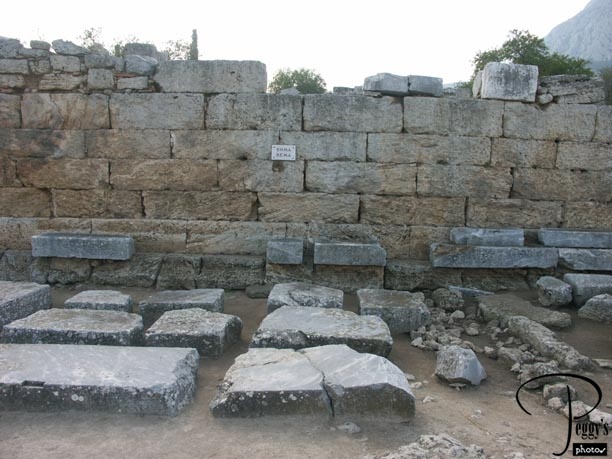
The Bema (platform) is where the Roman officials made public appearances. St. Paul came to Ancient Cornith in 51 A.D. and spent 18 months here. While in Cornith, he was accused of “persuading people to worship God in ways contrary to law” and, hence, was ordered to appear at the Bema in front of the Roman Proconsul Gallio. Gallio dismissed the charges against St. Paul.

Ancient Cornith
Ancient Cornith
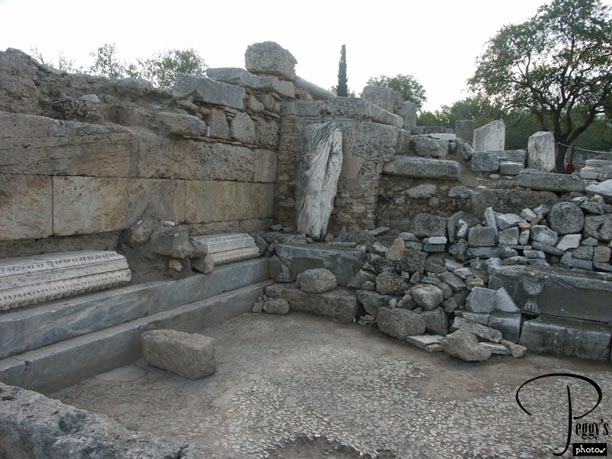
Torso of a statue in the ruins.

Ancient Cornith
Ancient Cornith
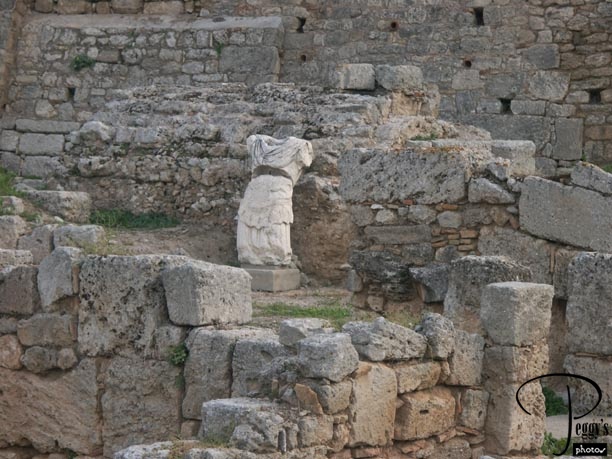
Another torso of a statue in the ruins.

Ancient Cornith
Ancient Cornith
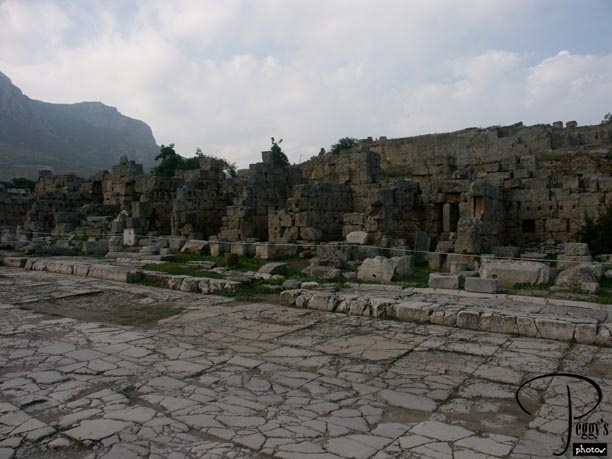
The Lechaion Road. This was a marble–paved road that linked the port of Lechaion with Cornith. It had sidewalks, with stores on both sides.

Ancient Cornith
Ancient Cornith
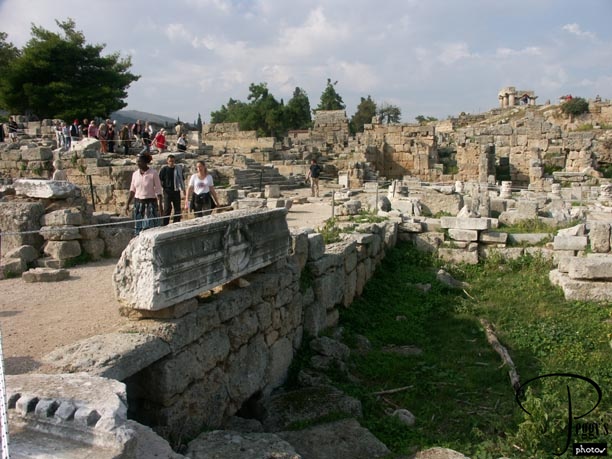
Ancient Cornith ruins. I believe that the ancient stairs in the photo marked the end of the Lechaion Road. Ancient Cornith ruins. I believe that the ancient stairs in the photo marked the end of the Lechaion Road.

Ancient Cornith
Ancient Cornith

The Fountain of Peirene. The fountain was named after Peirene, a woman who, according to myth, became a spring because of the tears that she shed upon the death of her son. Six cavelike chambers were built from which the spring water flowed into an open–air well.

Ancient Cornith
Ancient Cornith
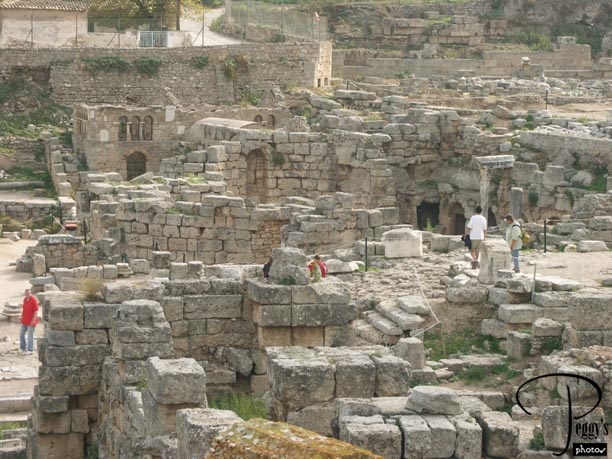
More of the ruins.

Ancient Cornith
Ancient Cornith
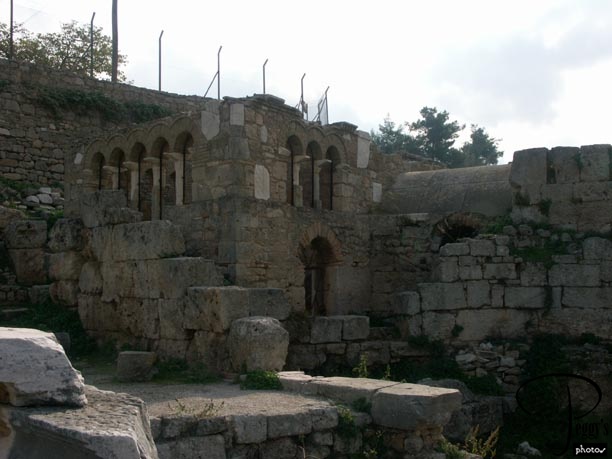
I believe that Sandra, our Trafalgar guide, told us that the different architecture on the top of this building is because its top level was built, at a later date, over the Roman structure.

Ancient Cornith
Ancient Cornith
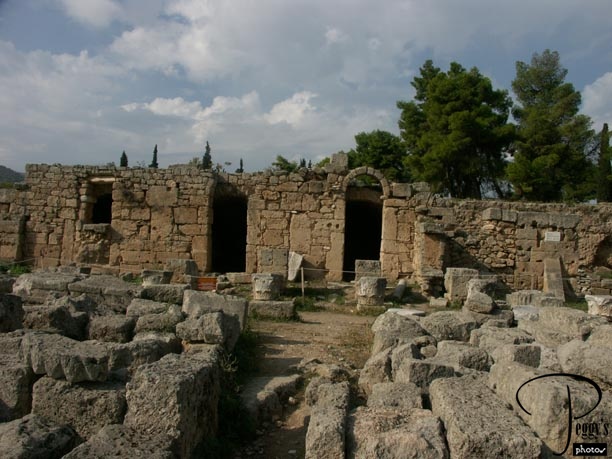
The West Shops of the agora.

Ancient Cornith
Ancient Cornith

More of the ruins. I’m not sure what these ruins are, but I include the photo because of the inscription that appears on top of it (see close–up of the inscription in the next photo).

Ancient Cornith
Ancient Cornith
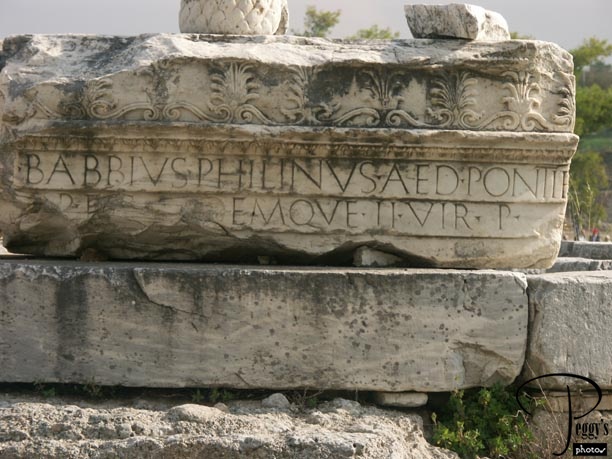
Close–up of the ancient inscription.

Ancient Cornith
Greek Countryside
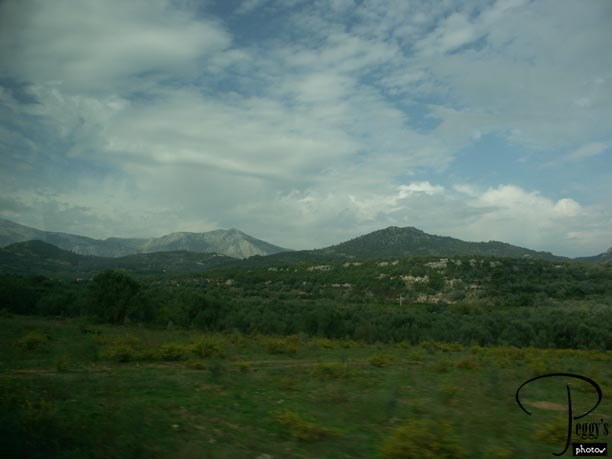
Photo taken from the bus of the Greek countryside on our way to Epidaurus. We stopped for lunch at a roadside restaurant.

Greek Countryside
Theatre of Epidaurus
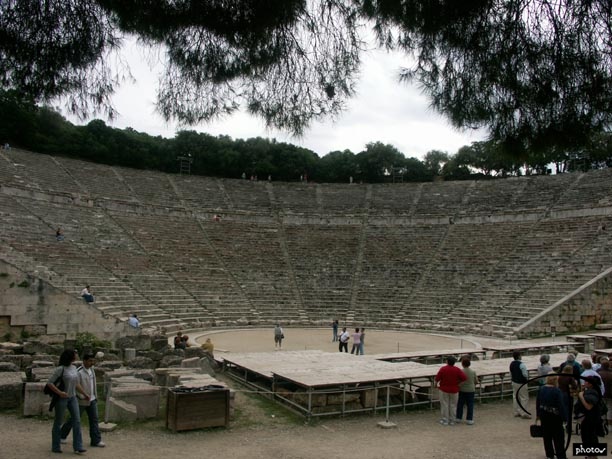
Also spelled Epidauros. At Epidaurus, we visited both this ancient theatre in the photo and the Sanctuary of Akelepios (also spelled Aesculapius). The theatre was probably built in the 4th century B.C. and seats 14,000 people. It is in such great condition as its stones were not pillaged to build other buildings. It is still used today as a theatre.

Theatre of Epidaurus
Theatre of Epidaurus

Some of the more adventurous members of our tour group climbed up those risky steps (103 of them). Marie is on the left and Eleanor is on the right, two other women who were traveling on their own and who I hung around with.

Theatre of Epidaurus
Theatre of Epidaurus
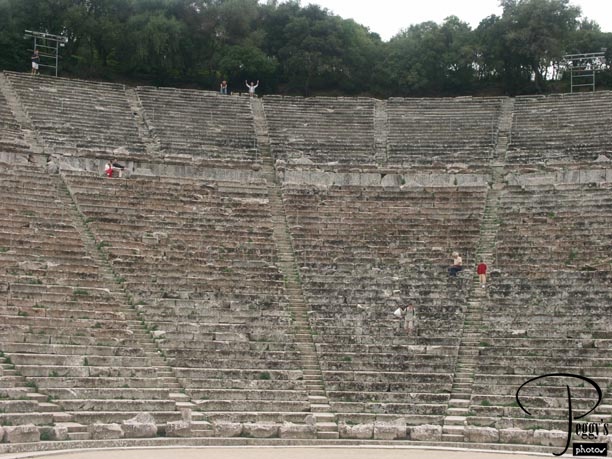
Marie made it to the top! Eleanor was smart and sat down halfway up.

Theatre of Epidaurus
Theatre of Epidaurus
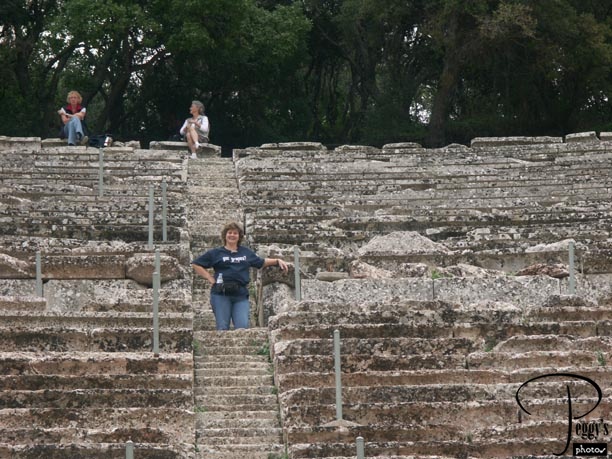
Janet is almost at the top. Janet is the fourth of our group of women traveling on their own who hung around together. We were a very compatible foursome.

Theatre of Epidaurus
Theatre of Epidaurus
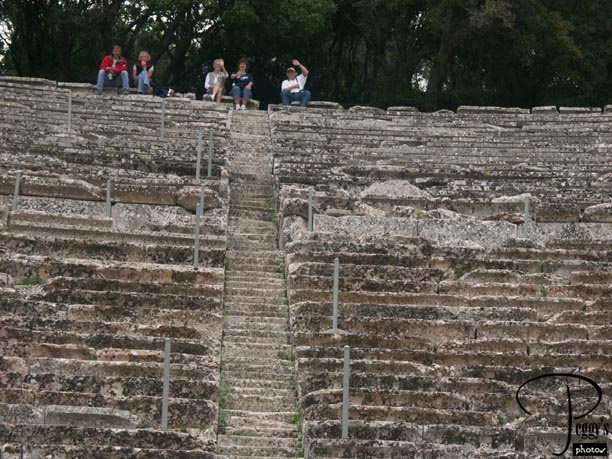
Marie, Janet, and Bob at the top. You need to remember Bob––he is one of the main characters in my story about my very thrilling donkey ride that I took later in the trip. Where was I?––of course, taking photos from below. Someone had to stay behind! But since this theatre is still in present use, the Greeks must be better ancient–stair climbers than we tourists, perhaps because we do not have these types of structures in our own countries to practice on.

Theatre of Epidaurus
Theatre of Epidaurus
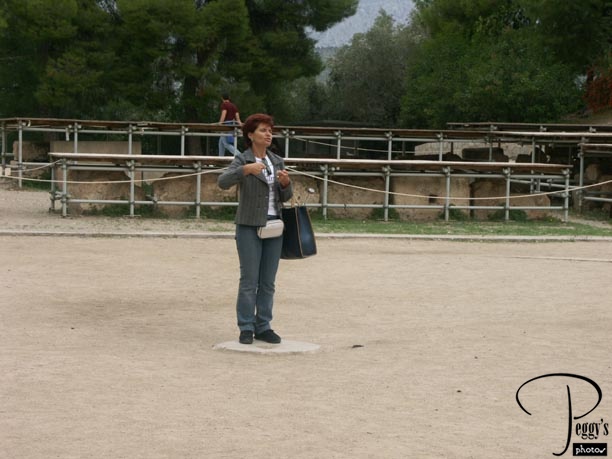
The acoustics at the Theatre of Epidaurus are famous. If one just speaks in almost a whisper where Sandra, our Trafalgar tour guide, is standing, that whisper can be heard clearly all the way to where Marie, Janet, and Bob are sitting.

Theatre of Epidaurus
Theatre of Epidaurus
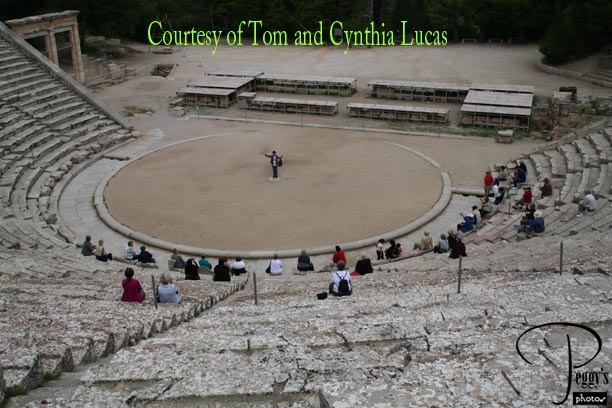
Tom and Cindy Lucas, two of our tour members, sent me this wonderful photo of Sandra taken from the middle of the theatre.

Theatre of Epidaurus
Theatre of Epidaurus
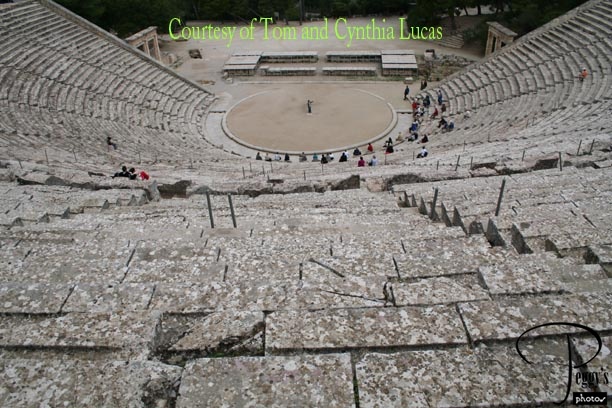
And also another great photo from Tom and Cindy taken from even higher up.

Theatre of Epidaurus
Museum of Epidaurus
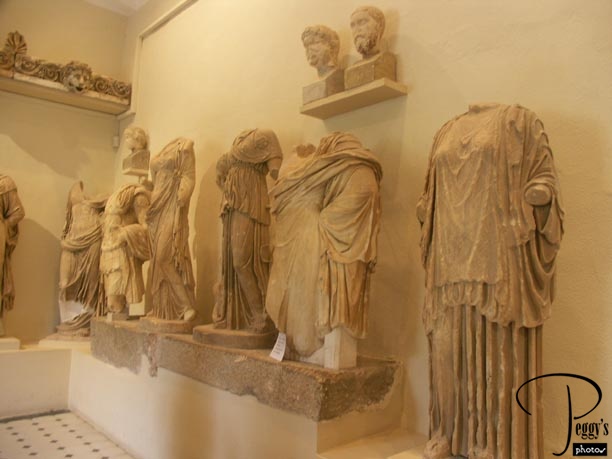
There was a small museum here with a collection of various artifacts that were excavated from the Sanctuary of Asklepios. Some of the statues.

Museum of Epidaurus
Museum of Epidaurus
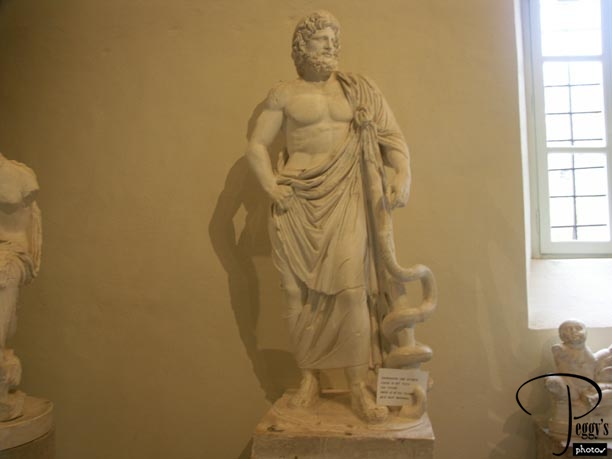
Statue.

Museum of Epidaurus
Museum of Epidaurus
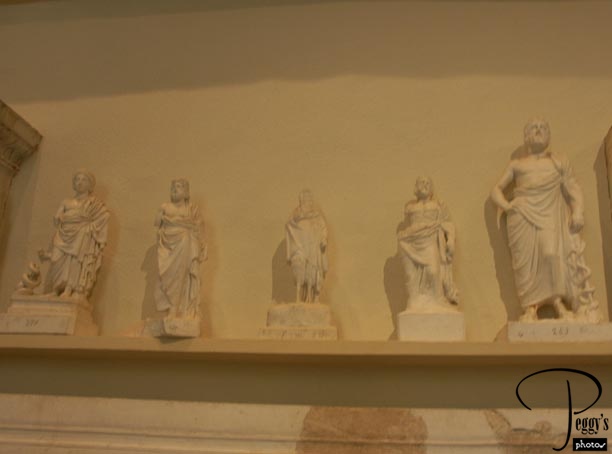
More statues.

Museum of Epidaurus
Museum of Epidaurus
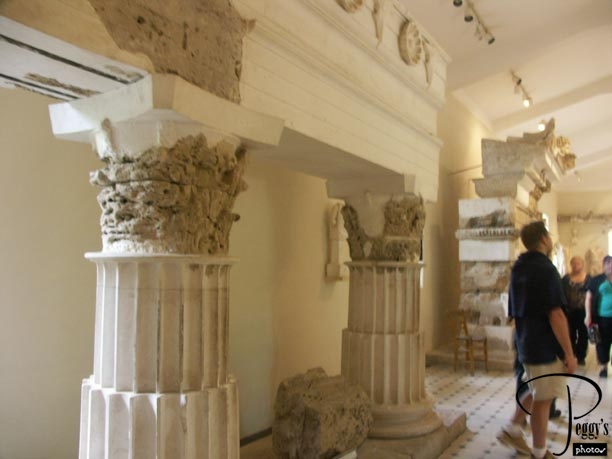
Ancient columns.

Museum of Epidaurus
Sanctuary of Asklepios
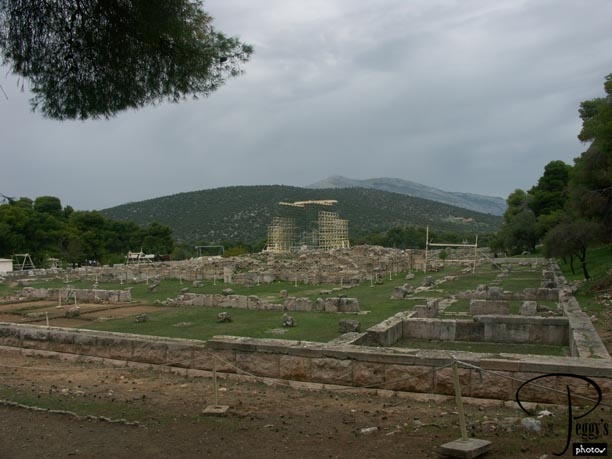
The history of the Sanctuary of Asklepios is, perhaps, more interesting than the ruins here, at least until the reconstruction of the sanctuary is further on its way. Asklepios was the god of medicine and healing. Ancient people came here in hope of a cure of what was ailing them. The sanctuary’s Asklepion had accommodations for visitors, several large bath houses, civic buildings, temples, shrines, stadium, and gymnasium and therapeutic mineral springs were close by. There were two long stoas where patients slept, hoping that Asklepios would reveal himself to them in a dream and present a cure for them. They might also be visited by the sacred (harmless) serpents that were kept here. The photo shows the ruins of the sanctuary and the on–going excavation and reconstruction

Sanctuary of Asklepios
Sanctuary of Asklepios
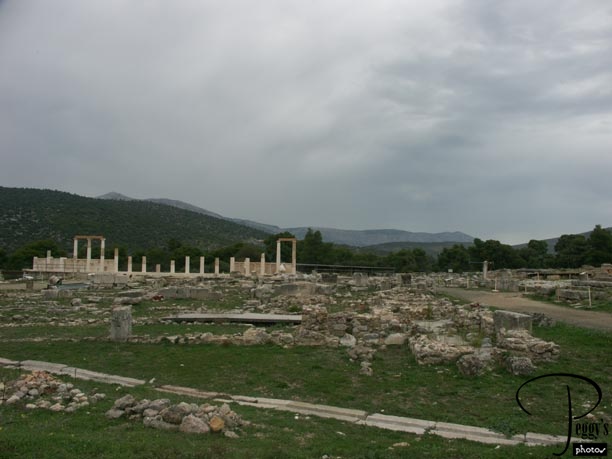
More of the ruins. In the photo, you can make out an ancient ramp and, also in the front of the photo, remains of the pavement of the Sacred Way that led from the gateway to the coastal town of ancient Epidaurus.

Sanctuary of Asklepios
Sanctuary of Asklepios
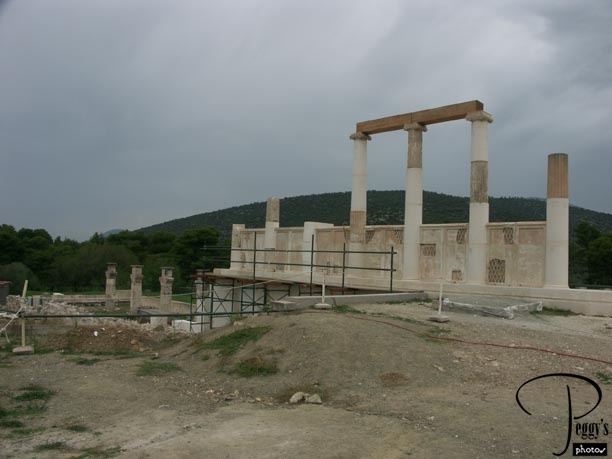
A view of the reconstruction. From the reconstruction, you can easily tell that the Sanctuary of Asklepios was a magnificent complex.

Sanctuary of Asklepios
Sanctuary of Asklepios
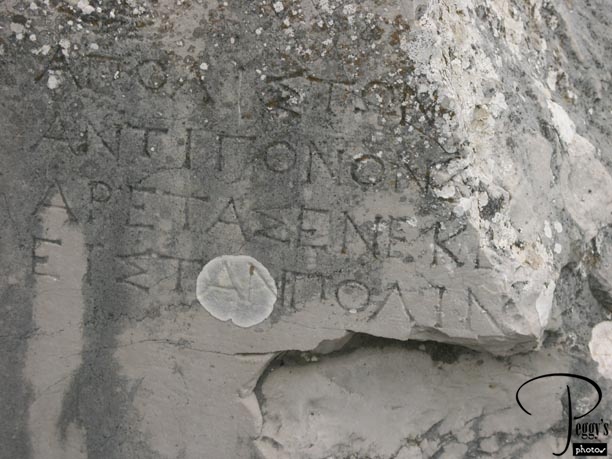
If a patient was cured, he or she left an inscription. The photo shows what probably was one of the inscriptions left by a patient.

Sanctuary of Asklepios
Sanctuary of Asklepios
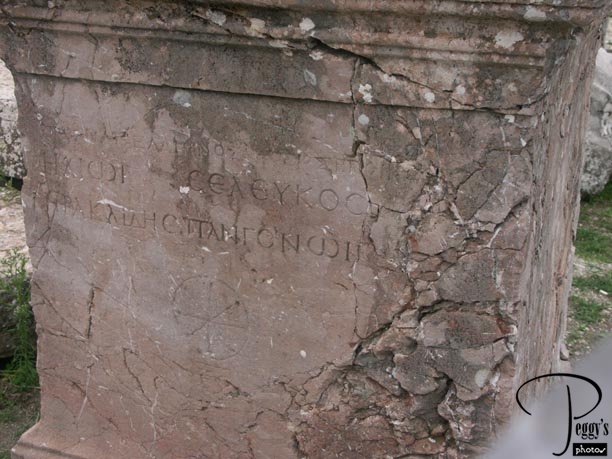
Another inscription.

Sanctuary of Asklepios
Sanctuary of Asklepios
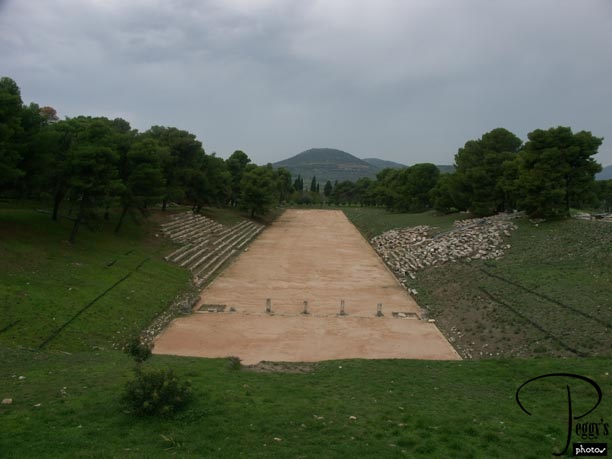
The stadium with intact rows of stone benches. You can also see the starting line in the photo. The stadium was used during the quarterly festival honoring Asklepios.

Sanctuary of Asklepios
Greek Countryside
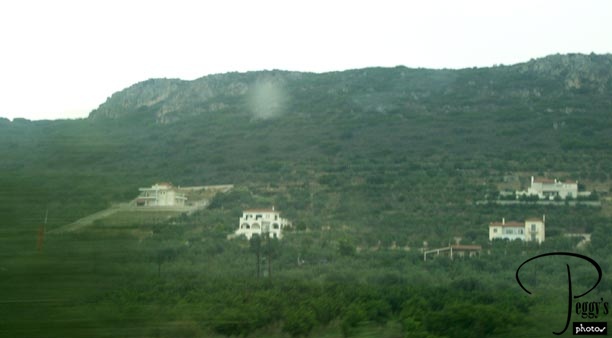
Not a great photo, taken from the bus, of the Greek countryside and some very large houses on our way to Nafplion.

Greek Countryside
Nafplion

Nafplion is also spelled Nafplio and Nauplia, but most of the guidebooks use the first spelling, so I will use that one here. This small town of 12,000 people was our overnight stop at one of the Amalia hotels, a chain of very nice hotels and we stayed all of our nights away from Athens one in their hotels. We were only given about an hour to walk around Nafplion before we left to go to our hotel which was not right in the town. However, you could easily spend a very enjoyable day or even two here. It was late in the afternoon when we arrived and it was starting to drizzle. When you first see Nafplion, you think that you have somehow been transported to Italy. Most of the neoclassical buildings in Nafplion look very Italian, which is understandable as the Venetians occupied Nafplion from 1686 to 1715.

Nafplion
Nafplion
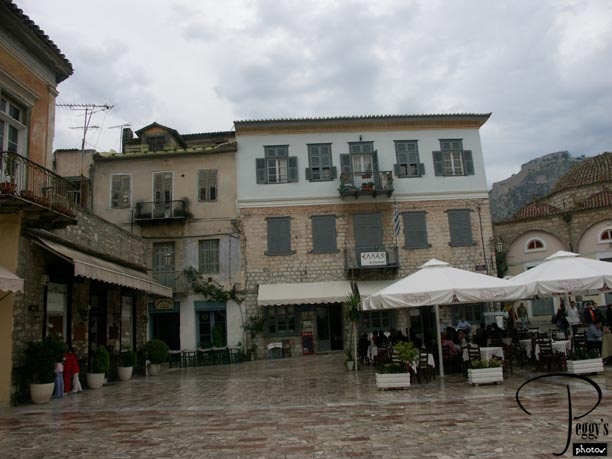
More buildings.

Nafplion
Nafplion
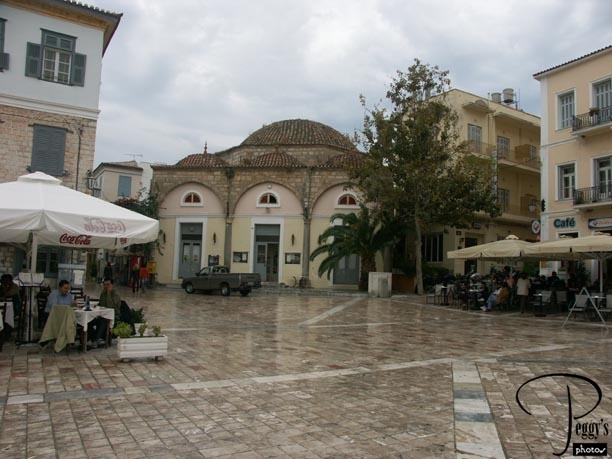
An Ottoman mosque in Plateia Syntagma (Constitution Square). Nafplion was also occupied by the Turks. Nafplion was the first capital of Greece in 1823. The Greek Parliament met in this mosque.

Nafplion
Nafplion
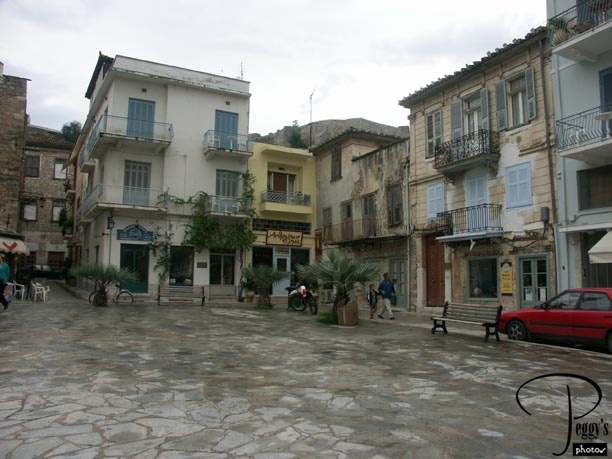
As in Italian towns, there was another square very close to the main Plateia Syntagma.

Nafplion
Nafplion
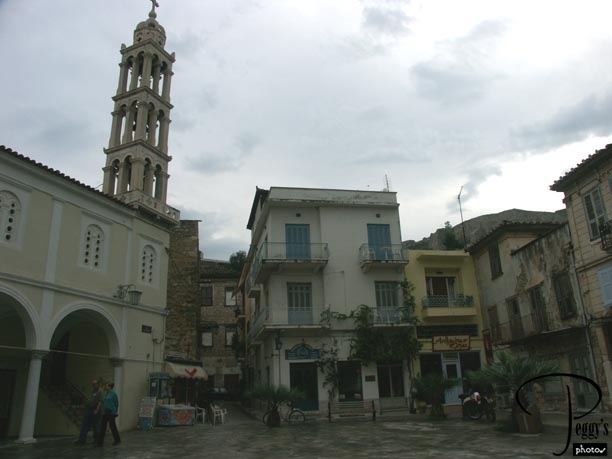
More of the second square.

Nafplion
Nafplion
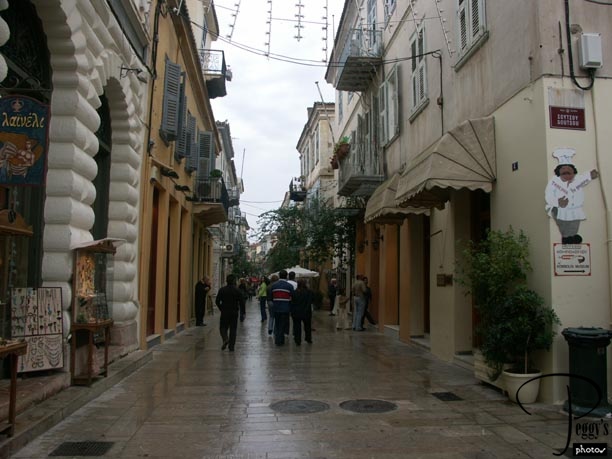
Street in Nafplion.

Nafplion
Nafplion
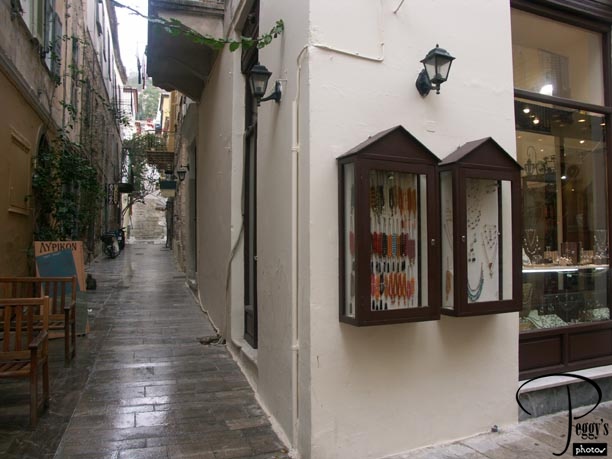
Narrow street with stairs at its end.

Nafplion
Nafplion
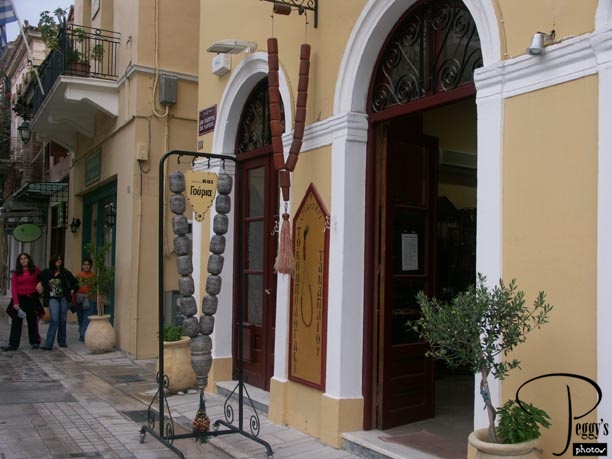
Worry beads in front of a store. You have to have really big worries for the size of these beads.

Nafplion
Nafplion

Church.

Nafplion
Nafplion
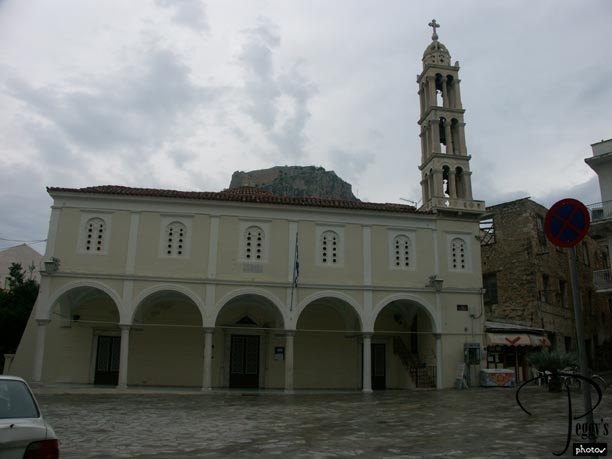
Another church. You can see the fortress at Acronafplia above the church.

Nafplion
Nafplion
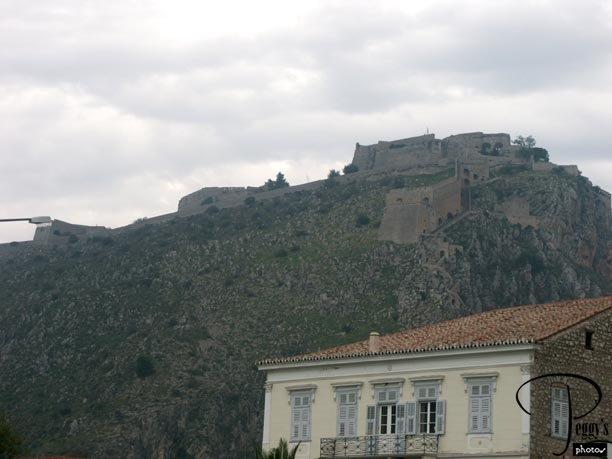
Another view of the fortress. There are three fortresses at Acronafplia, one Frankish, one Byzantine, and one Venetian (1700s). There are 800 stairs to climb to the top. One of my guidebooks said that there is an elevator to the top; another said that you can take a taxi to the top.

Nafplion
Nafplion
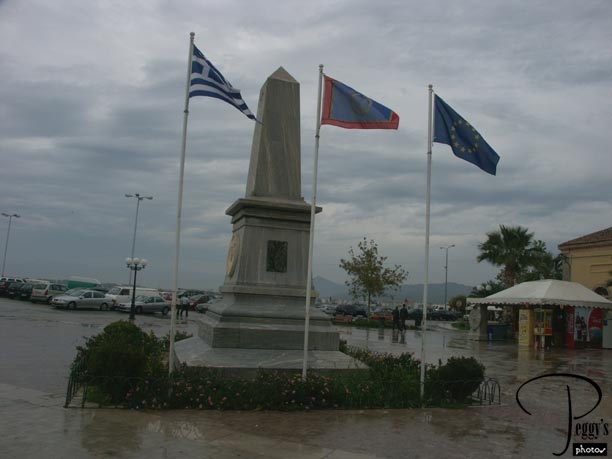
At the harbor area. The flag on the left is the Greek flag; I do not know what the middle flag is, perhaps the Pelopponese flag; and the flag on the right is the European Union flag.

Nafplion
Nafplion
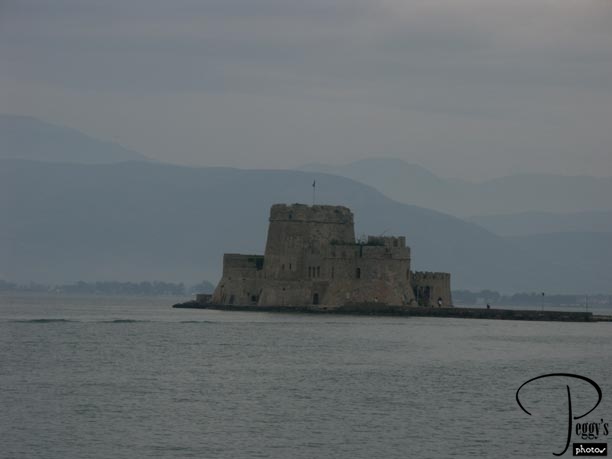
Venetian fortress on the harbor. You can take a boat for a visit to it. I was sorry to have to end my visit to Nafplion so soon. I very much liked it.
